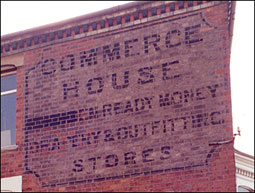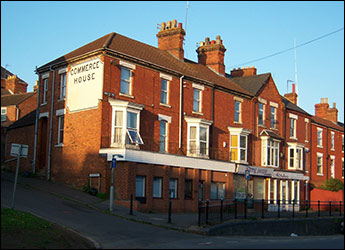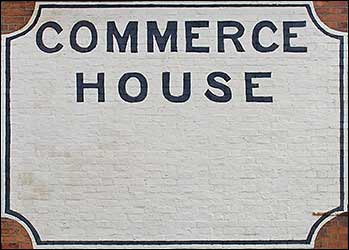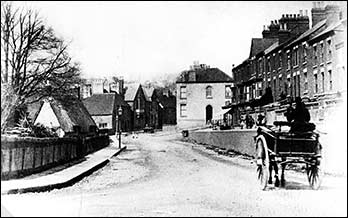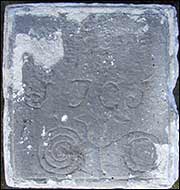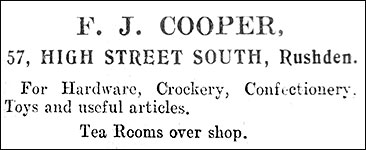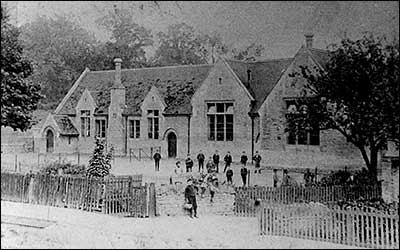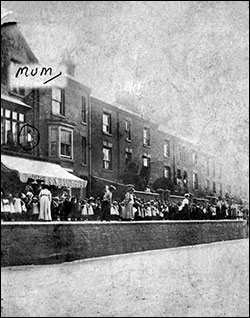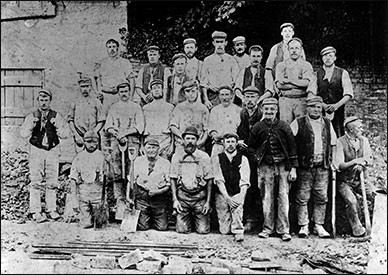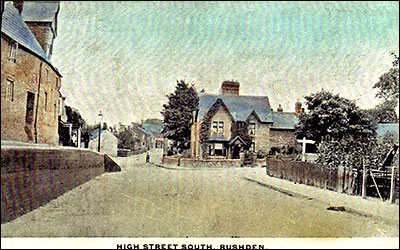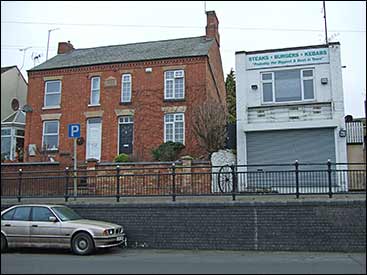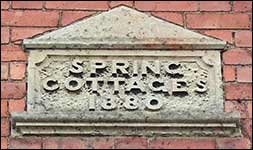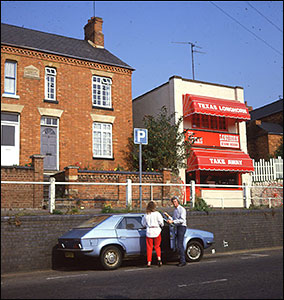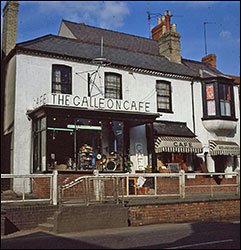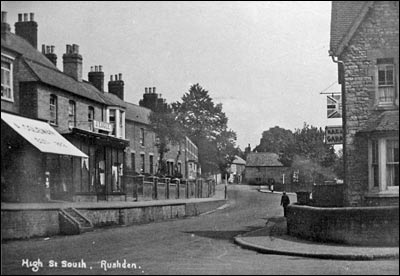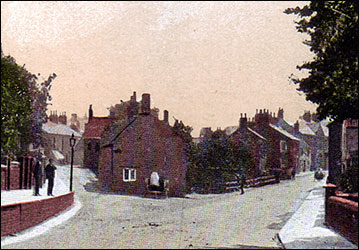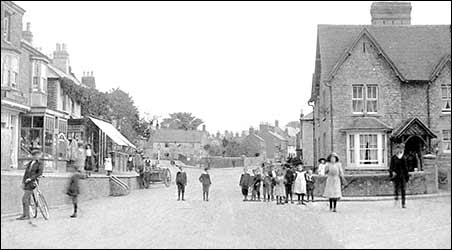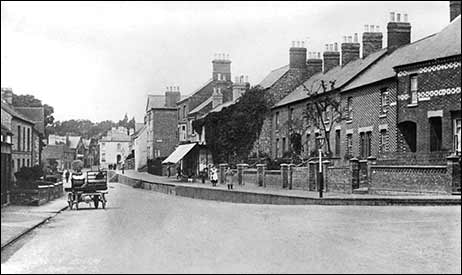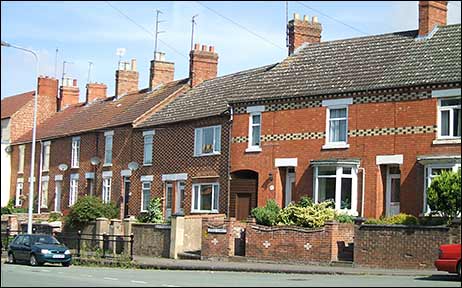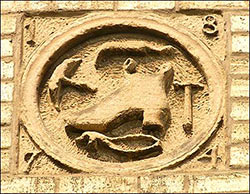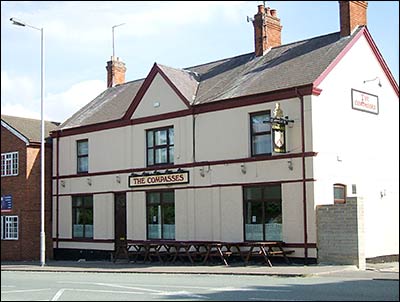and beyond Wymington Road turn towards Bedford
 |
|
Marked pink: South End School, red: Old Meeting Baptist Church, blue: ground cleared and made into a garden
|
|
||||||||||||||||||||||||||||||
|
||||||||||||||||||||||||||||||
|
1910 Valuations
|
||||||||||||||||||||||||||||||
|
||||||||||||||||||||||||||||||
|
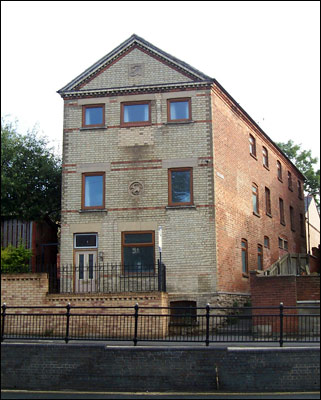 |
||||||
|
c2008 with windows replaced
|
| Rushden Echo, 13th July 1928, transcribed by Kay Collins A High Pavement at Rushden Mr Tysoe seconded. Mr Claridge said he would like Mr Perkins and Mr Tysoe to say how it was to be improved. He could not see how it would be done. Mr Tom Wilmott said he thought the Council were going to hear something, but they were no nearer. Mr A Wilmott: If money would make it safe for children, the committee would look at it. We don’t know how to make it safe. Children will climb from the pavement if it is fenced. I remember that wall 30 years ago, and I only know of one accident, a perambulator running off. The pavement is 12ft. wide. Mr Tysoe: I don’t think we should be expected to bring a laid-out plan scientifically drawn up to bear out our proposition, as Mr Wilmott and Mr Claridge suggest. Nor should they expect us to show a detailed system of safety. If the thing is a danger, if one child during the whole of its life-time should run over the side, then the subject is worth discussing. I feel on this Council—excuse me complaining, Mr Chairman, Mr Claridge, Mr Wilmott, and friends—if a man sits here and offers suggestions, we don’t want it thrust down our throats. We want to feel that we are here to discuss Counbcil business sincerely and in the right spirit. If we think that Something Should Be Done Mr Tom Wilmott: I am sorry Mr Tysoe took it in this light. Mr Perkins said we had had this before us several times. “Then,” he said, “I will bring it forward again.” I just said what we knew and asked if Mr Perkins or Mr Tysoe had anything tangible to offer. Mr A Wilmott: I have lived there for 30 years and had the factory there for 17 years. There was only one slight accident all the time. At present I could not support the proposal. We have so many propositions, so many things needed for the good of the town. If a fence is put up, it will look unsightly, and I think there will be more accidents. I don’t think this is urgent at all. There are scored of improvements needed, and when you have only £5 to spend and no more to lay out you must be careful. Mr Spencer supported the resolution, not, he said, to commit the Council to large expense, but to have the point considered again. Mr Richardson said the chief danger was with children playing with balls. Replying to the discussion, Mr Perkins said it would be presuming too much, when there were experts on the committee, to offer them a scheme, but he thought there might be a dwarf wall and a small railing on top. If the boys climbed, it would be their fault. At any rate the Council would be protecting little ones who were too weak to climb the fence. The question must not be shelved indefinitely. He personally would not allow a child to take a perambulator on the pavement. To wait until an accident had happened was not right. The resolution was carried. |
Beyond Wymington Road turn
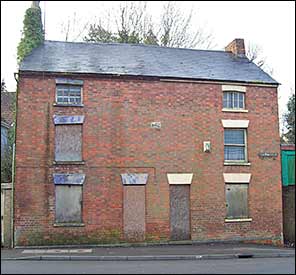 |
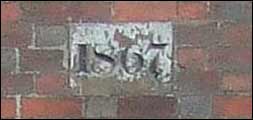 |
|
Date stone and plaque on this pair of houses built 1867 - demolished 2010
|
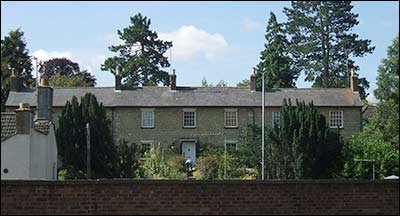 |
|
|
|
'Rosebank' - Originally named Bayes Yard after the builder.
Photo taken from Little Street c2008 |
|
|
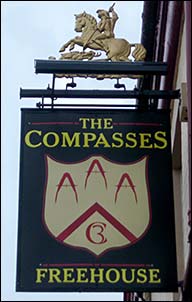 |
|
The Compass Inn sign in 2010 is Three Compasses but is now known as The Compasses.
Previously the sign was "Keep within the Compass". It was rebuilt in 1904. |
|
| High Street South Cottages Mr Currie of Rushden House built these cottages for the workers on his estate, c1871. These stone cottages were opposite the Compass Inn. The wall in front of them was constructed of blue engineering quality bricks and steep steps led up to the fronts. |
||
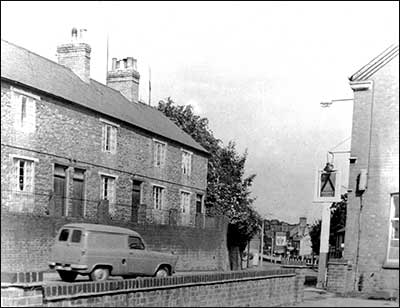 |
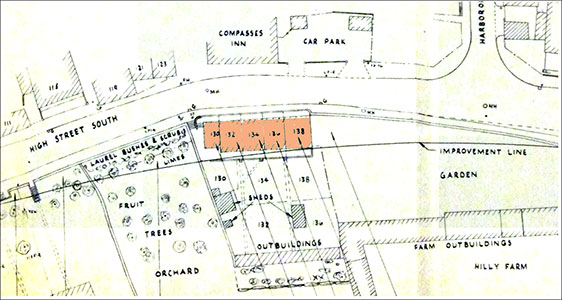 |
|
|
The section of High Street South opposite the Compass Inn
|
||
1910 Valuations
High Street South part 1
